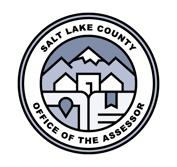
Assessor
Leased/multi-location business personal property is requested to be reported within an Excel file emailed to pp-lease@slco.org.The signature page should be emailed also; it does not need to be mailed separately.
Salt Lake County Assessor's Office
Salt Lake County levies taxes on January 1 of each year and allows 60 days for filings to be submitted.
Leased/multi-location business personal property is requested to be reported within an Excel file emailed to
The signature page should be emailed also; it does not need to be mailed separately. The preferred column headers for each Excel sheet would be as follows, in order:
Location (Physical address of the business where the property is being used. This must be compliant with USPS records. Related to City and ZIP.)
Name (Name of the business where the property is being used.)
Class (Three-digit State Class number representing the type of property involved. View the detail for this at https://propertytax.utah.gov/personal/classification-guide.)
Year Acquired (Four-digit year in which the property came originally into possession.)
Cost (Full cost of property at the time of acquisition, at same level of trade—including freight, installation and sales tax, but not including interest or finance charges.)
Asset Number (This may be the same as the lease or contract number. If one is not provided, the Assessor may create one.)
Description (Detailed information which may indicate the asset type, use, model, and so on.
It is preferred to have all acquisitions listed within the same Excel sheet as the assets currently on file.
It is preferred to have disposals listed in a separate Excel sheet, but in the same workbook as acquisitions, along with their date of and reason for disposal, and their new location.
It is expected that standardization of spelling, format and so on be implemented; a lessee name or city should be spelled the same way in each place it is found. Addresses should coincide with a physical address of a business. PO Boxes should not be reported. Physical addresses should follow USPS standards:
It is expected that escape tax will be applied to any asset with an acquisition year prior to the reporting year. To avoid unnecessary escape tax, the tax payer must notify the Assessor, with detail, of assets which have been previously reported in other jurisdictions or which frequently change locations.
Lease agreements, specific lease terms, shipping documentation, letters of authorization and so on can be requested at any time to verify account status and reporting of assets.
It is the tax payer’s responsibility to officially notify the Assessor when there is a change in the business name, business address, point of contact, and so on.
Printed versions of leased/multi-location business personal property filings will still be accepted. Based on the number of assets and complexity of a filing, an Excel version may be requested to simplify the filing review or to supplement the printed version.
Make payment as you prefer by:
The online payment system allows a maximum of $99,999.99 in one payment. Multiple payments can be made on the same account.
By check, written to SALT LAKE COUNTY ASSESSOR, PO BOX 147421, SALT LAKE CITY, UT 84114.
All leased/multi-location property–that which is not defined as real property or which is exempted.
"An Item of taxable tangible personal property means equipment, machinery, furniture or other tangible personal property that is functioning at its highest and best use for the purpose it was designed and constructed and is generally capable of performing that function without being combined with other items of personal property. An item of taxable tangible personal property is not an individual component part of a piece of machinery or equipment, but an item of machinery or equipment as a whole. For example, a fully functioning computer is an item of taxable tangible personal property but the motherboard, hard drive, tower or sound card, are not.”
(The Utah State Tax Commission, Recommended Personal Property Valuation Schedules, p.29
All owners (lessors, users, operators, possessors) of leased/multi-location business personal property must file, when that property was in Salt Lake County as of January 1.
True lease is one in which the lessee returns the property at the end of the lease or may purchase the property at fair market value. The lessor retains ownership of the property and the lessor reports it as leased business personal property on their lease account. The lessee accounts for it using Schedule B.
Capital lease is one in which, most often, the lessee will purchase the property for a nominal sum. The lessee holds some or all of the ownership of the property and the lessee reports it along with their fixed assets, using the Schedule A.